Apologies... this page has a LONG way to go... but in the meantime... here are some images of two beautiful things I saw, which took breath-taking talent, skill and days of work to create.
We visited a place in Nepal where calligraphy was being created.
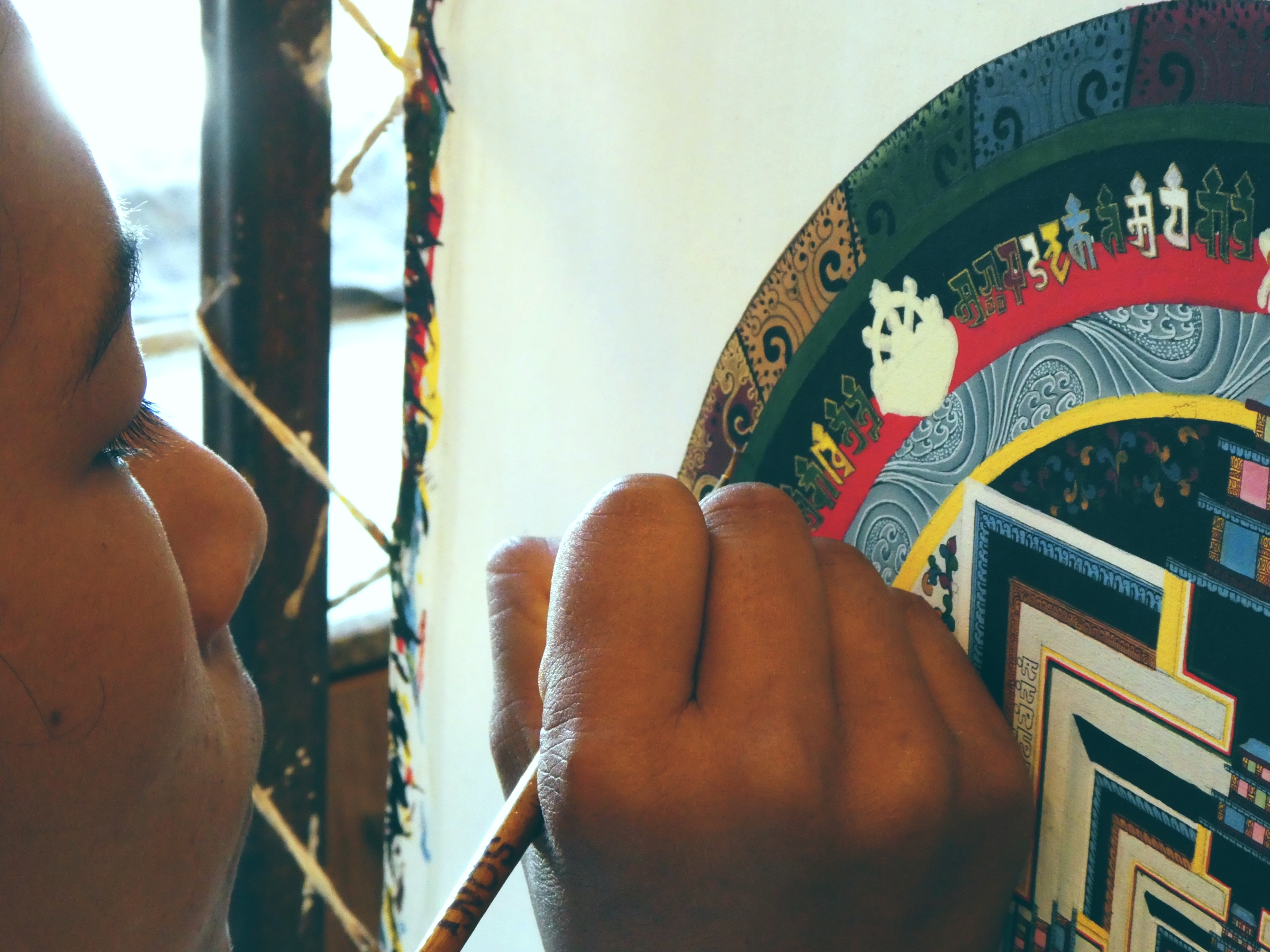
It was extremely heartening to see young people learning the craft. Again and again when we visited places were ancient arts and crafts were still alive, there was an ominous absence of younger people learning the skills. In "houses" where one or a few families had worked for generations, passing down skills and trade secrets, we heard the lament that none of the youngsters wanted to carry the traditions on.
Many of the artists were related, across at least 3 generations.
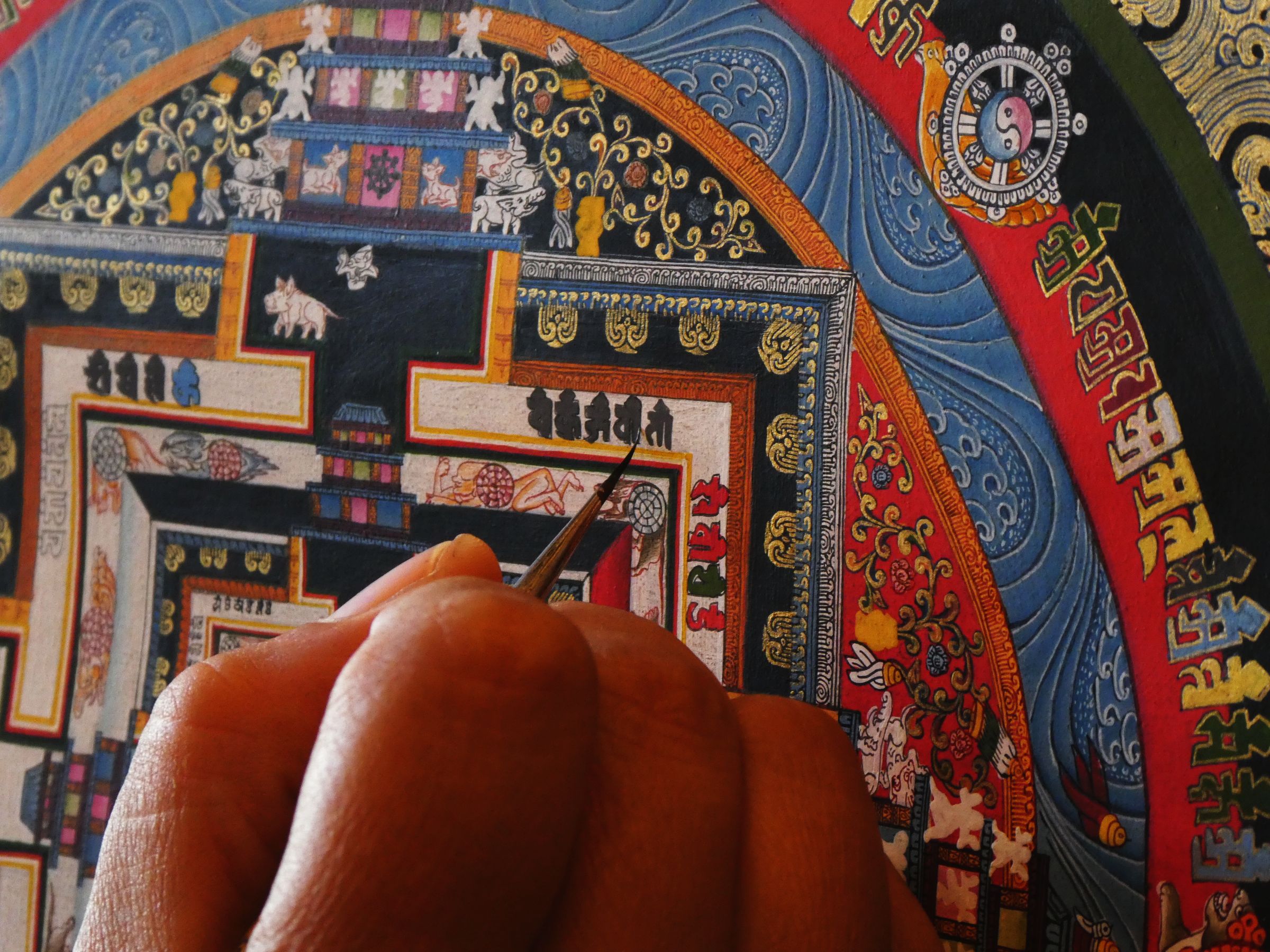
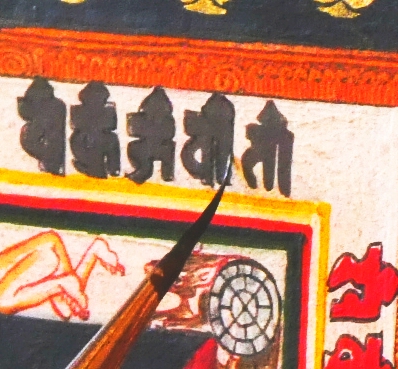
Notice in the second photo: the artist is "only" drawing a thin line around the characters.
There are some blemishes in the images due to reflections on the glass of the frames they are in. I feel guilty that I haven't done a better job... but I've done the job I can with the time I have for this.
Regarding mandalas: Buddhist stupas, viewed from above, are usually mandalas in stone. Their form is also laden with symbolism, which I hope I can remember, or look up, and write about here, eventually. Wikipedia says they "simultaneously represent the Buddhist cosmology and the nature of mind."
That symbolism is, of course, also present in the graphic mandalas of that sort.
(Note also that the great South African was Nelson Mandela, not Mandala.)
In the meantime, the main point is the beauty and the amazing detail in the product of the studio we visited, and the others like it down the ages.
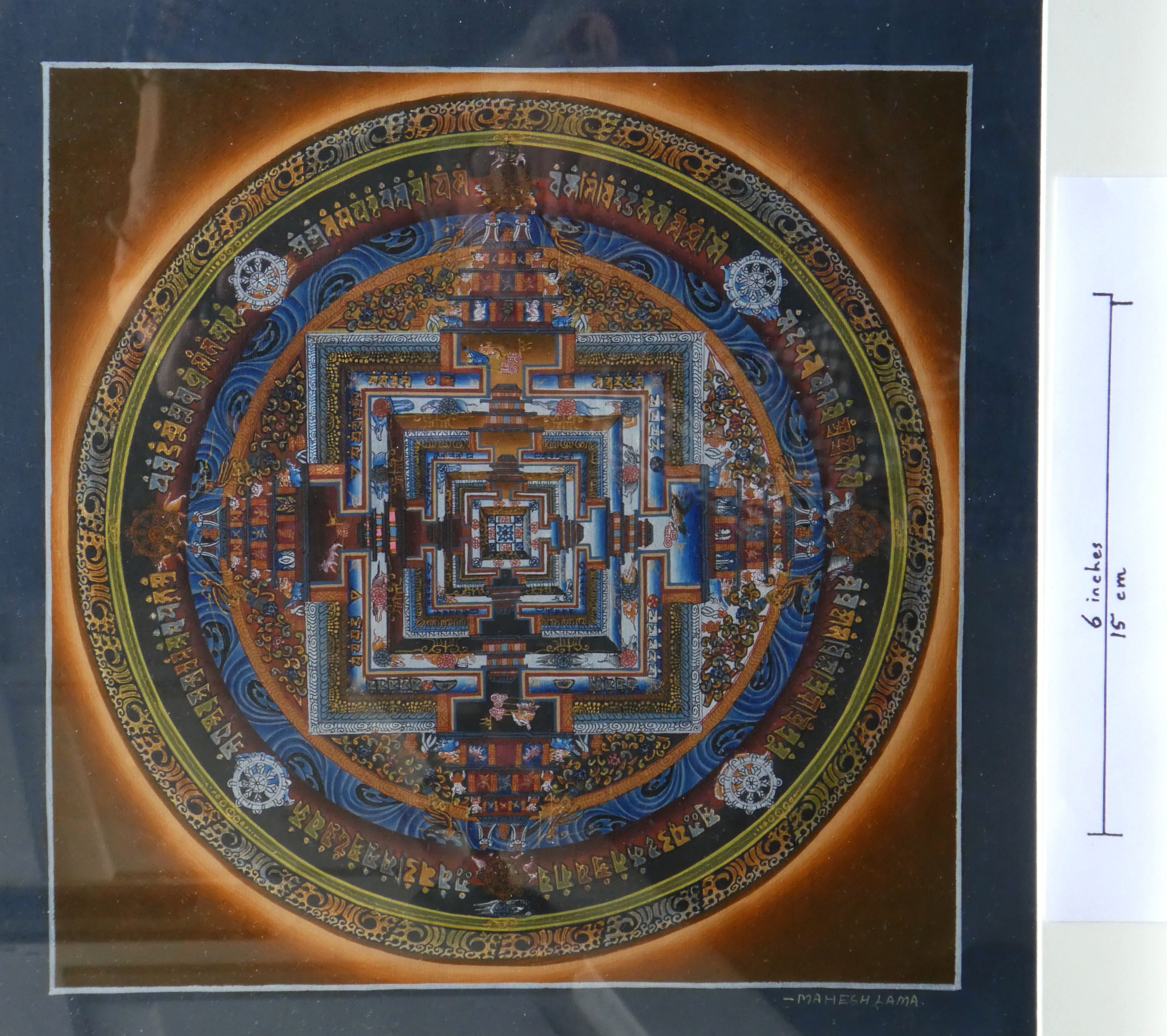
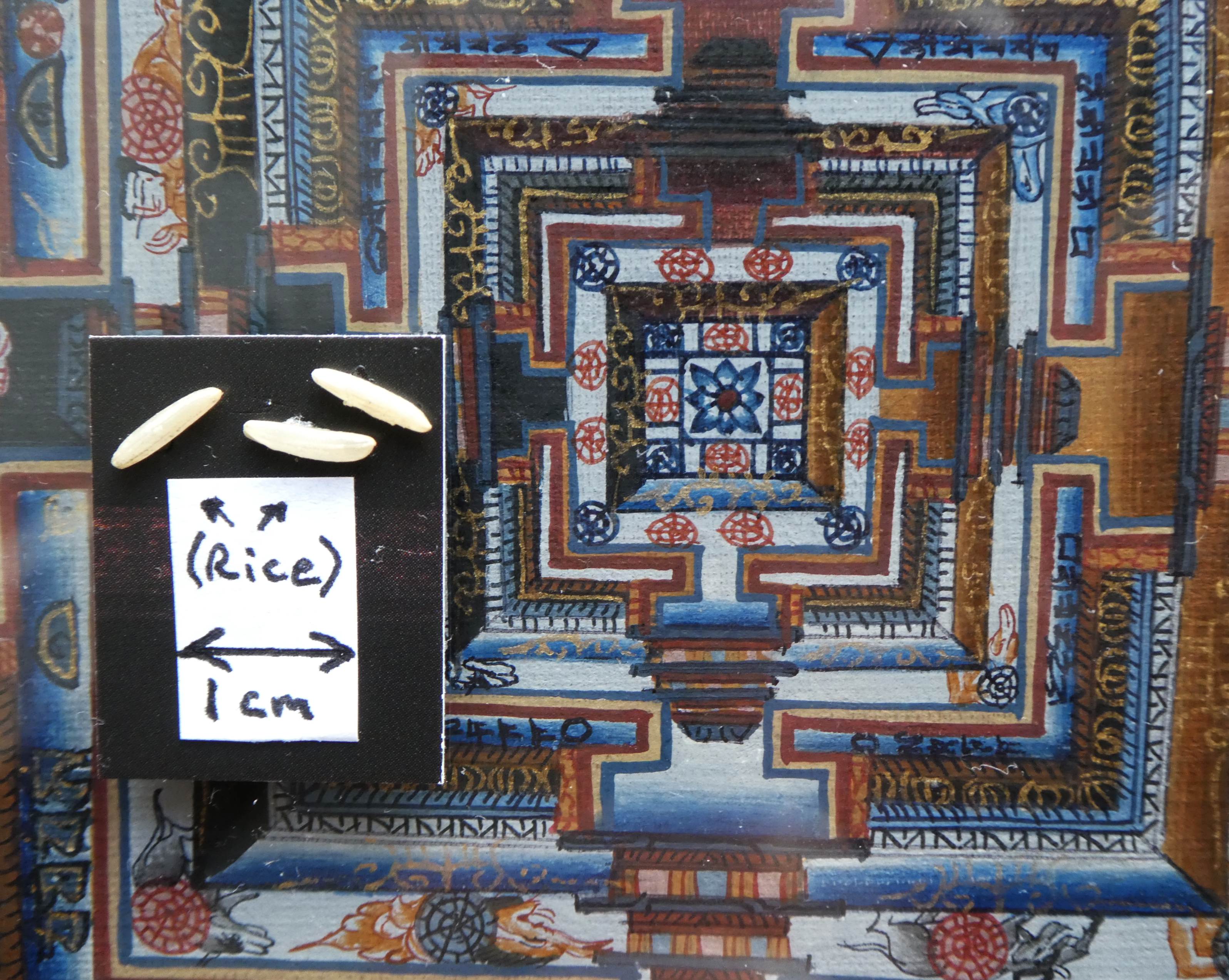
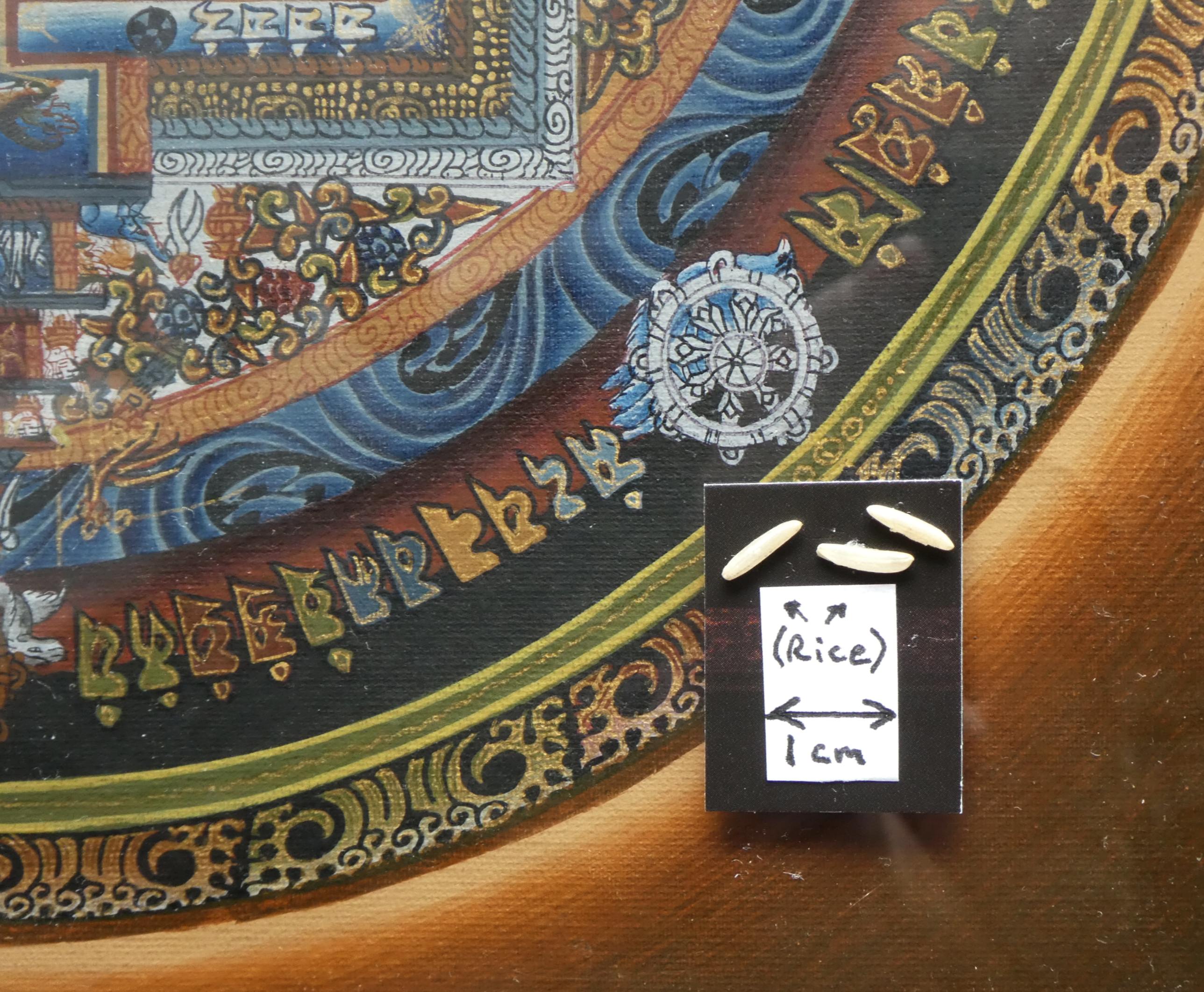
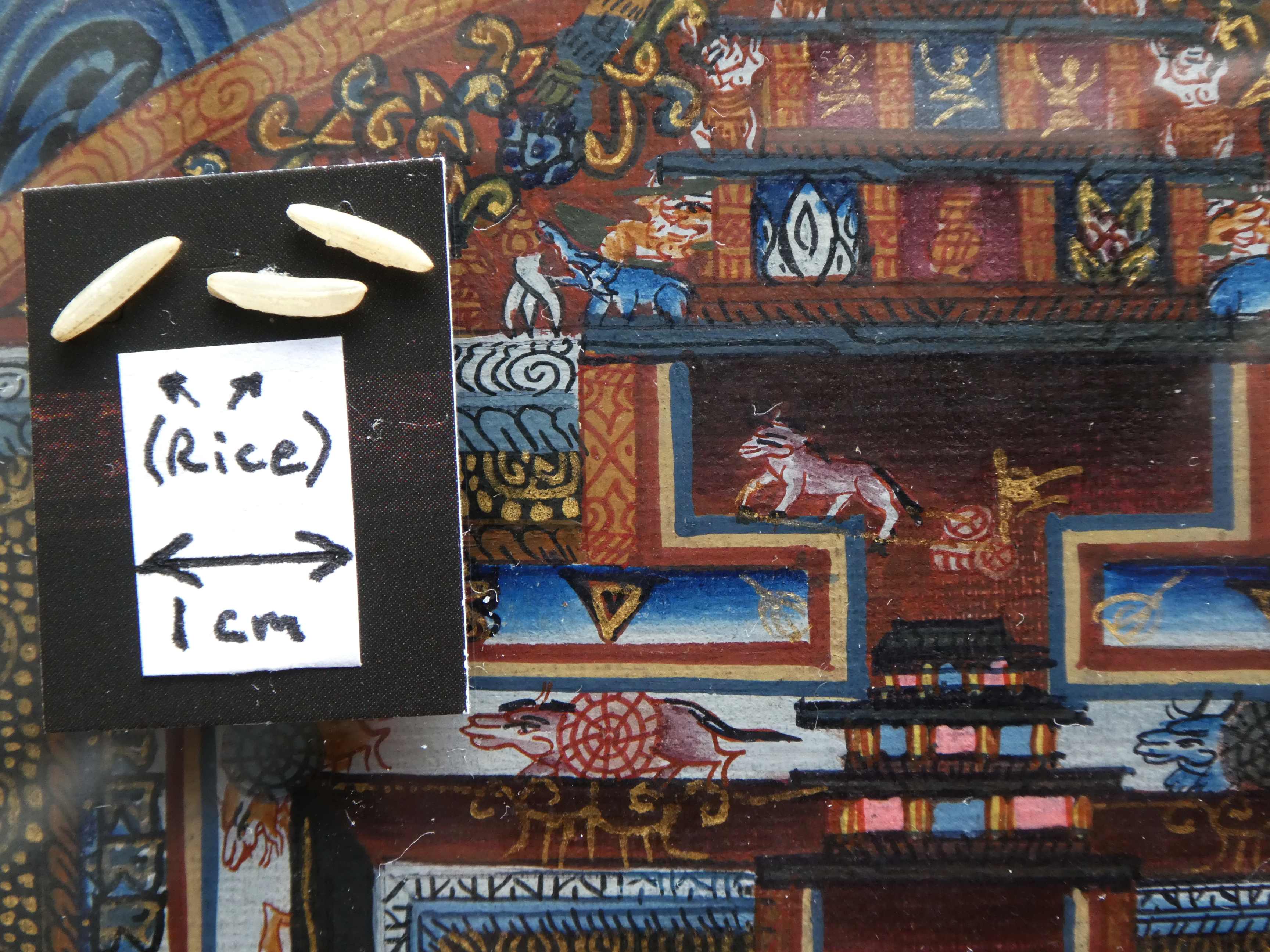
Some of the drawing is done with a brush with only a single hair. Some of the "gold" bits are done with a paint with metallic gold in it.
This is a depiction of "The Wheel Of Life"... a diagram of religious significance that readers of Kipling's Kim may remember featuring in the story.
I've only just read Kim! (I suspect all of the friends who might have commended it to me assumed I'd read it many years ago. It is a very "Tom! book!)
I then read a good book about the book! (Explores what in the real world can be linked to what Kipling put in Kim. Quite a lot, it turns out. For instance, the curator of the museum that features early in the book can be identified as Kipling's father.)
Anyway...
The "Wheel of life" features as an element in the story, so I thought getting a nice copy of it would be a good souvenir, and was successful, in the end.
At first, no one seemed to know what I meant, when I was asking for it, and then, when I'd given up, "gone with" something else... I finally asked the question in the right way of the right person, and... success!
I'm sorry... more images to come... but I've run out of time for now.
Note the "macro" as well as the "micro", i.e. the huge pink creature holding the wheel.
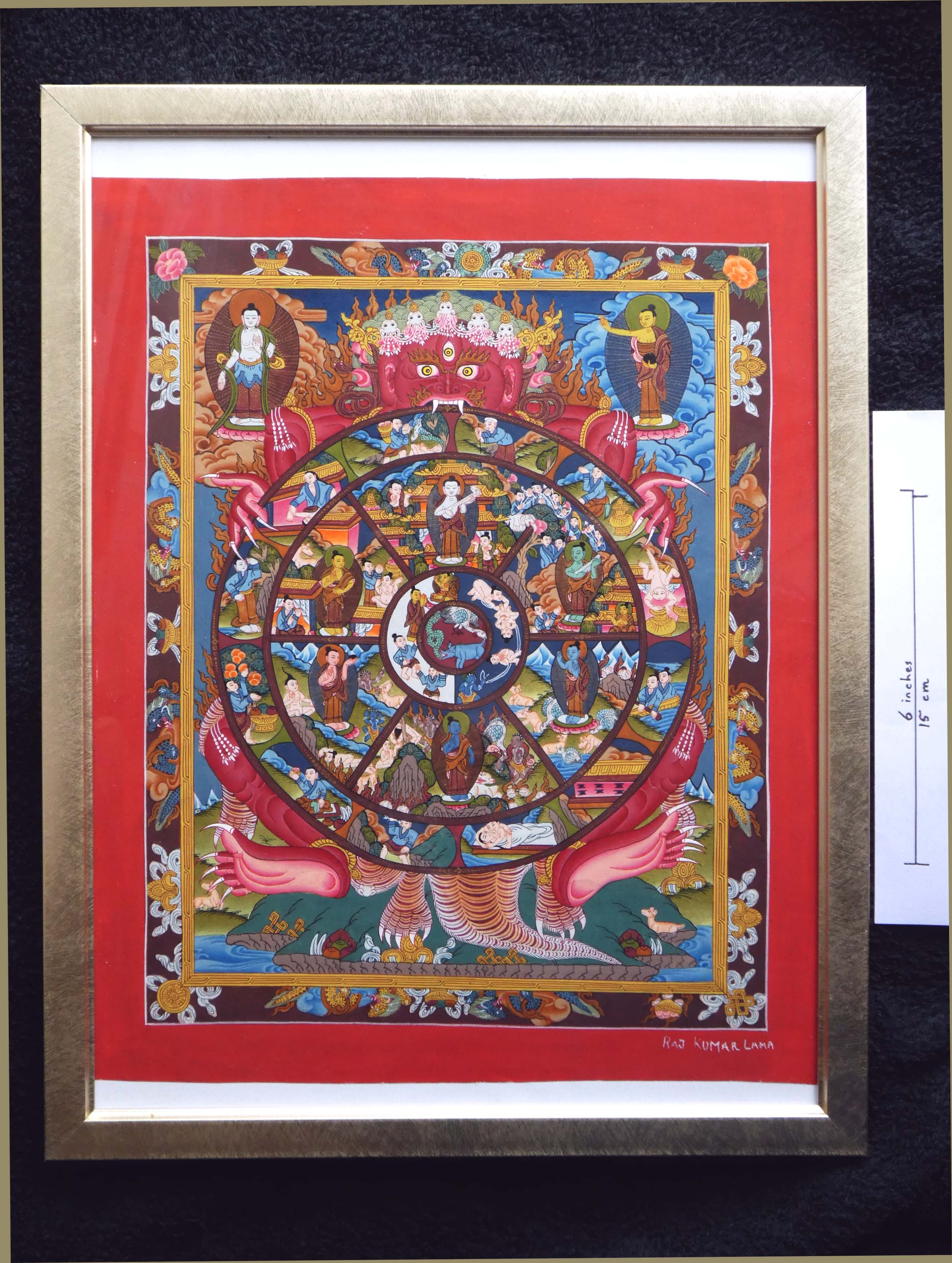
The Wikipdeia article will explain the Wheel far better than I can. (Much of the next paragraphs are heavily indebted to that article...)
It can be viewed as a "teaching aid", used to help learners understand Buddhist teachings. It is used in both Indian and Tibetan Buddhism. Seven percent of the world's population are Buddhists. (Wikipedia again. There are about 30 Buddhists for every Jew.)
At the center of the wheel, we find a pig, a rooster and a snake. They represent the "three poisons": ignorance, attachment and aversion.
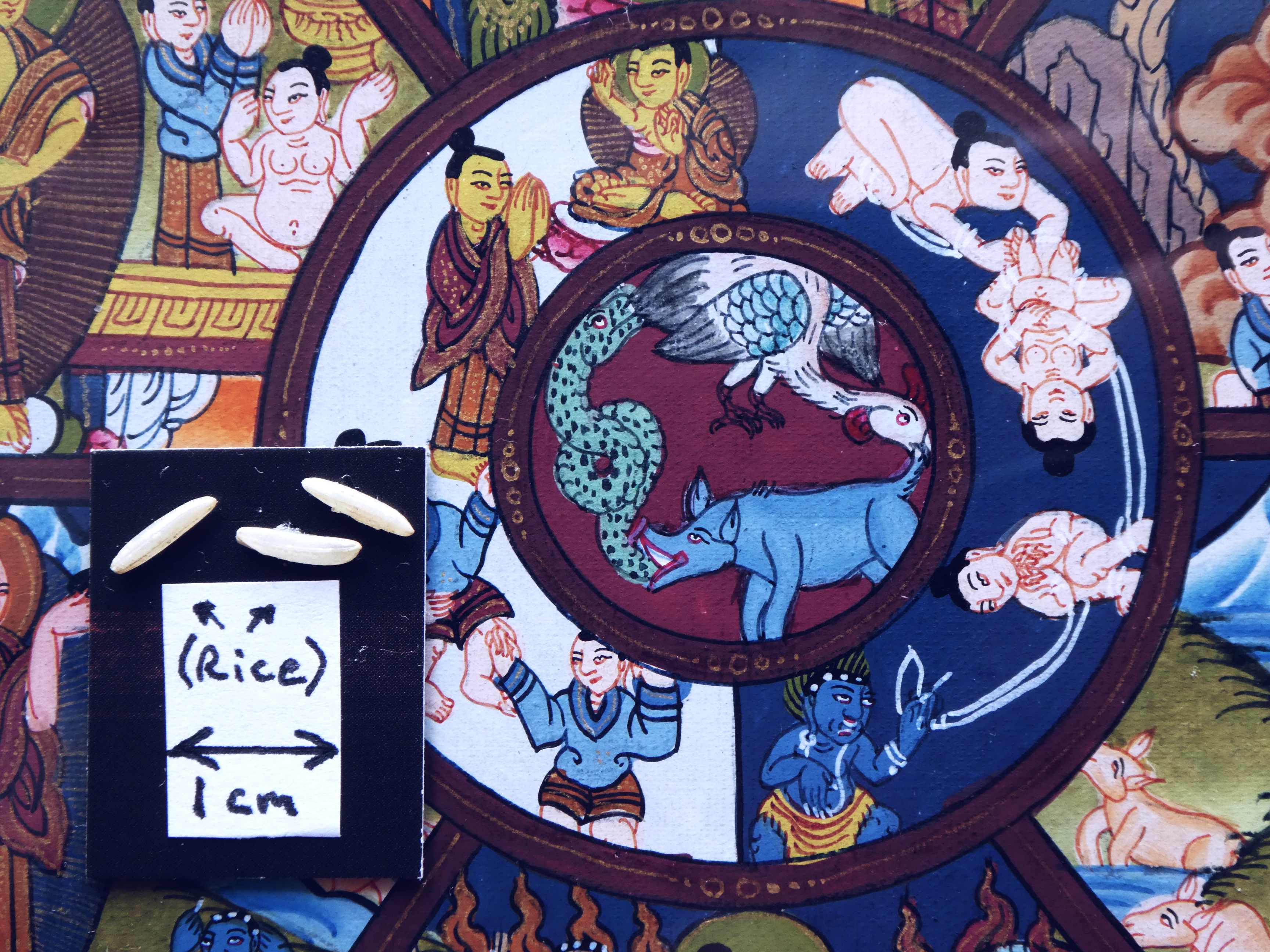
Shown above, the ring outside the circle represents karma.
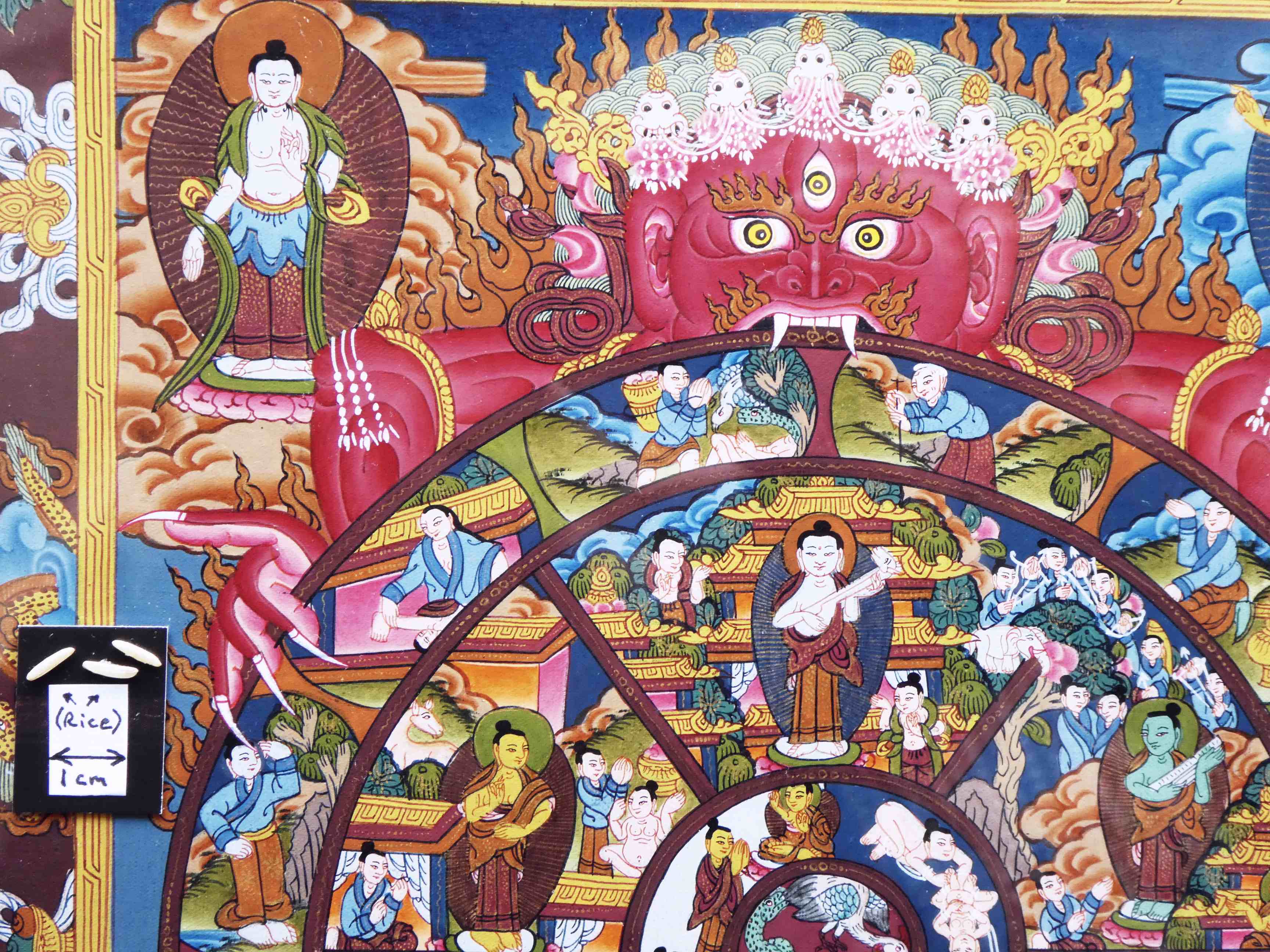
Shown above, the six large segments surrounding the karma layer "represent samsara and its Six Paths". The Six Paths are the six worlds where sentient beings may be reincarnated at the end of a given life. They range from the world of the gods (NOT "heaven", not the ultimate hoped for outcome) to hell. But remember- you can fall down, or rise up, from any of these.
I believe... and I didn't dig long enough to confirm this... that the ultimate goal is to NOT be reincarnated. For your existence to end.
So! There you have a START to interpreting The Wheel! Is is NOT just a jumble of artist's dreamings.
Here's another example of the detail in the diagram...
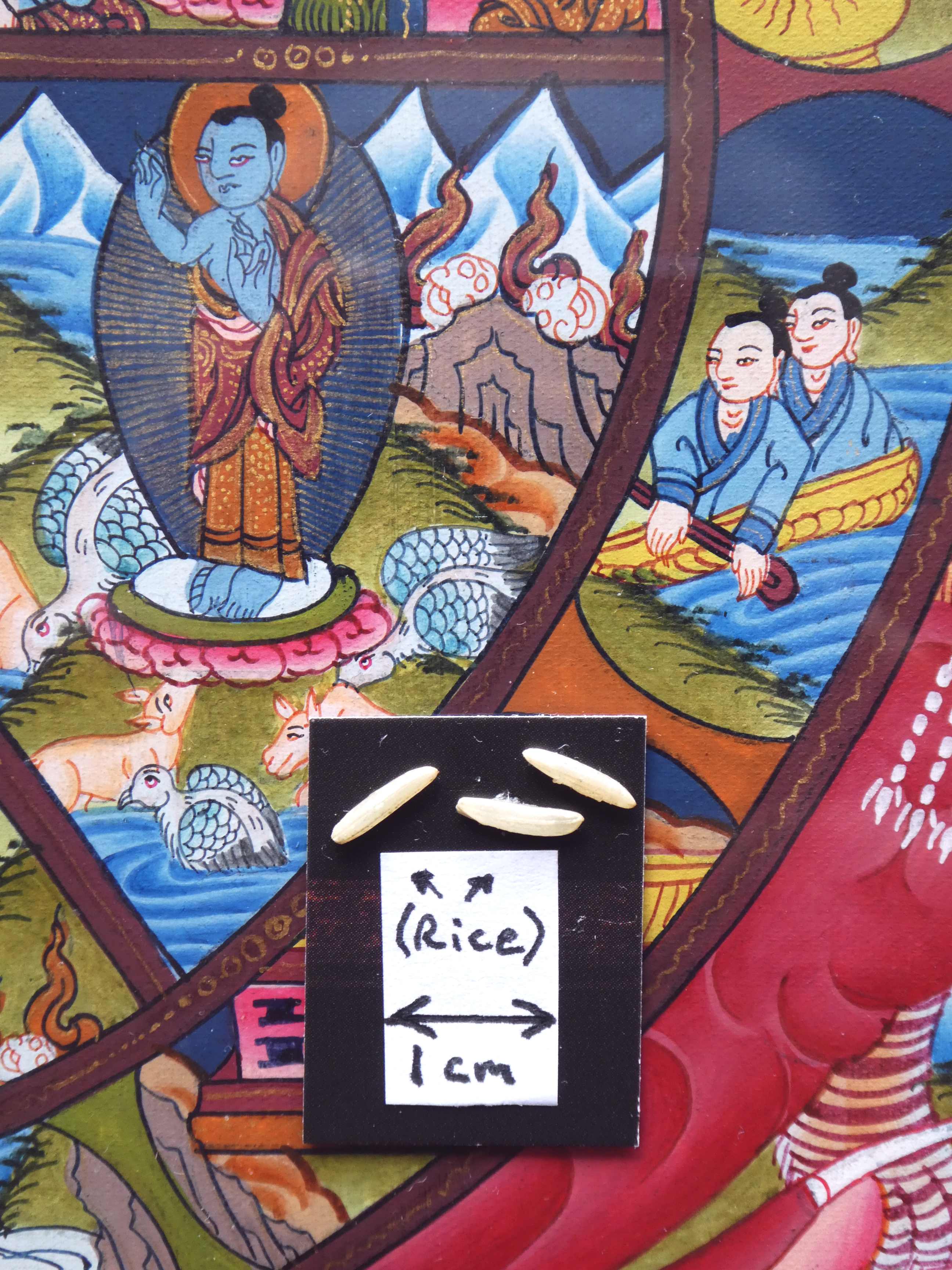
Search across all my sites with the Google search button at the top of the page the link will take you to.
Or...
Search SheepdogGuides.com site, including my trip reports...
|
What's New at the Site / / Advanced search
This search tool (free to me and to you) provided by FreeFind.com... whom I've used since 2002. I'm happy with them... obviously!
Unlike the clever Google search engine, FreeFind's merely looks for the words you type, so....
* Spell them properly.
* Don't bother with "How do I get rich?" That will merely return pages with "how", "do", "I"....
Disclosure: FreeFind tells me what people have searched for. It doesn't tell me your personal details. (If someone would "spy" on you, wouldn't they also feel free to lie in a "privacy statement"? Not to say I'm not lying... how can you tell?... but to say "What are privacy statements worth?".
The search engine merely looks for the words you type, so....
*! Spell them properly !*
Don't bother with "How do I get rich?" That will merely return pages with "how", "do", "I", "get" and "rich".
I have other sites. The Freefind search will not include them. They have their own search buttons.
My SheepdogSoftware.co.uk site.
My "wywtk.com" site...WhatYouWantToKnow
And there are links from those pages to pages at my SheepdogGuides.com, Arduserver.com and Flat-Earth-Academy.com sites.
My oldest-still-going site is at http://www.arunet.co.uk/tkboyd/index2.htm but that does not accept httpS access. An image of most of it is also available at https://skywoof.com/aru/index2.htm
--Click here to visit editor's freeware, shareware page.--
This page's editor, Tom Boyd, will be pleased if you get in touch by email. Suggestions welcomed! Please cite "SheGui/tr/india23/cr-call.htm".
Page has been tested for compliance with INDUSTRY (not MS-only) standards, using the free, publicly accessible validator at validator.w3.org. It passes in some important ways, but still needs work to fully meet HTML 5 expectations.
. . . . . P a g e . . . E n d s . . . . .